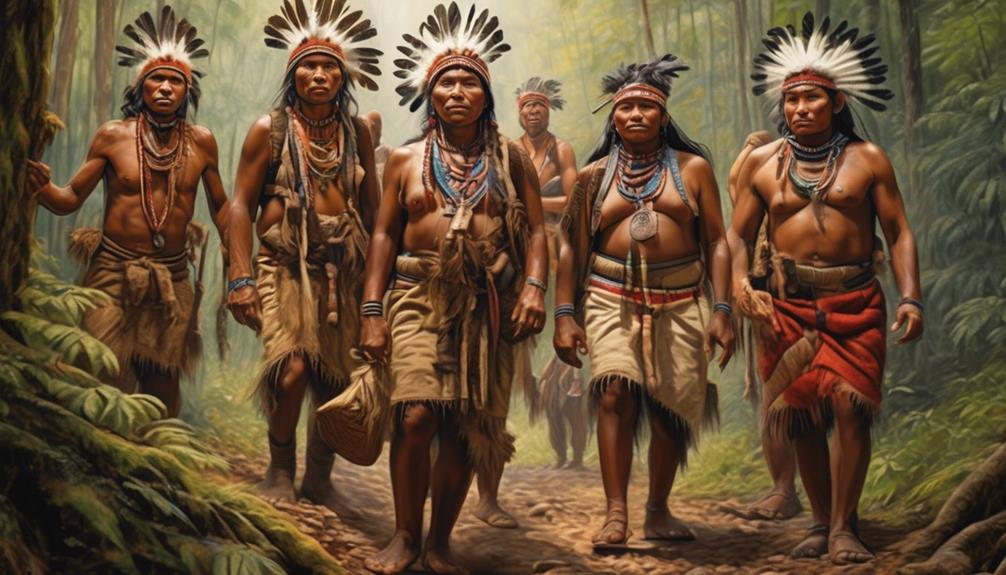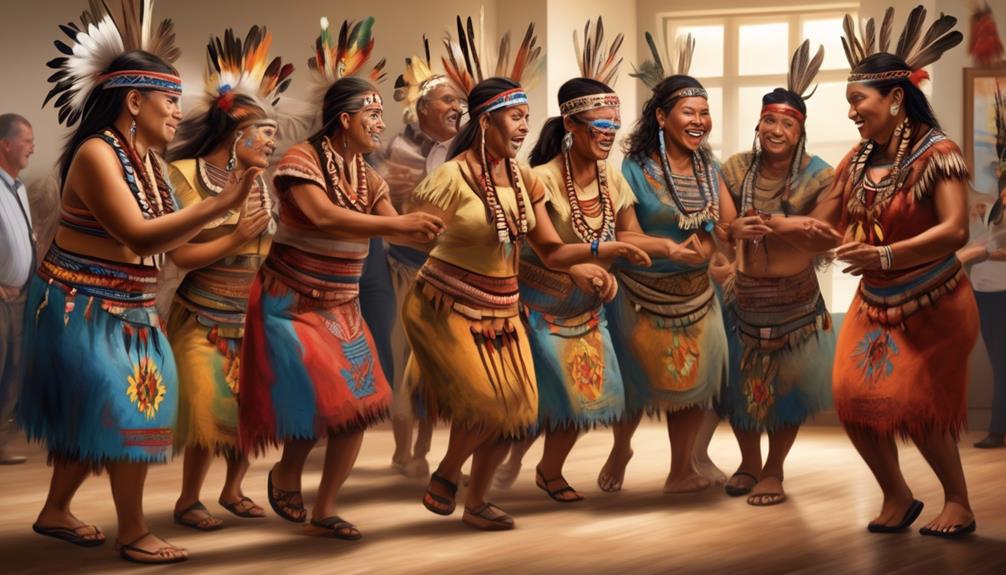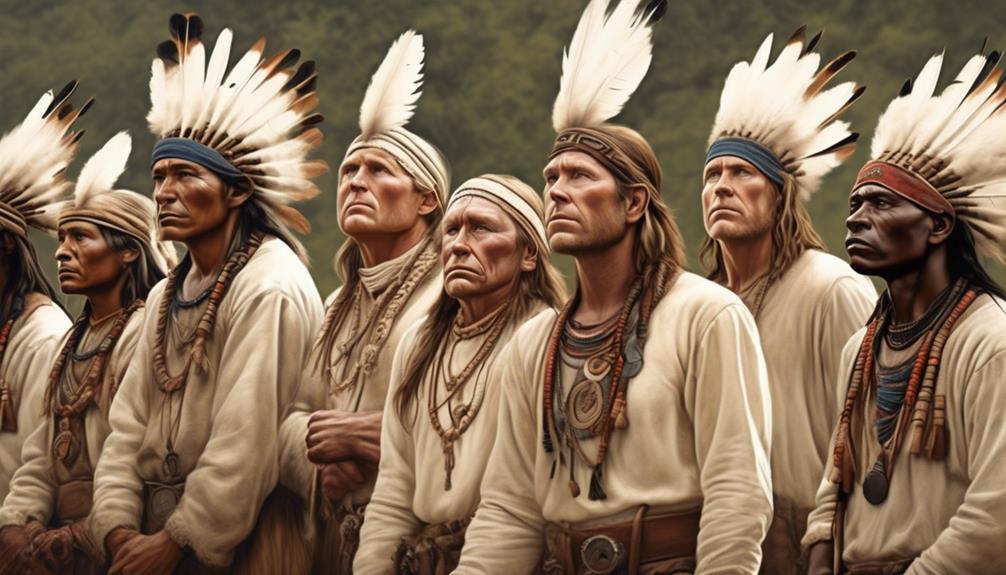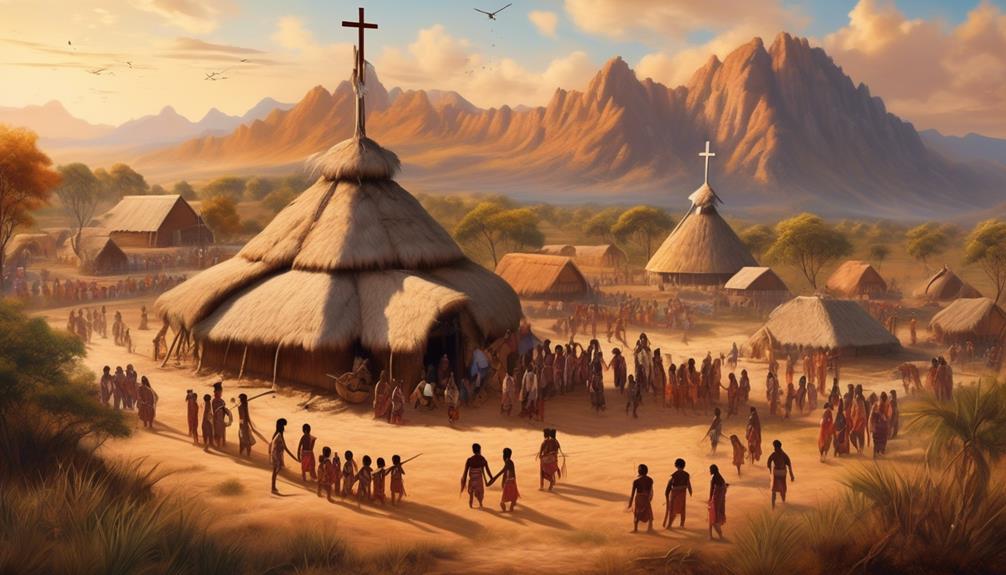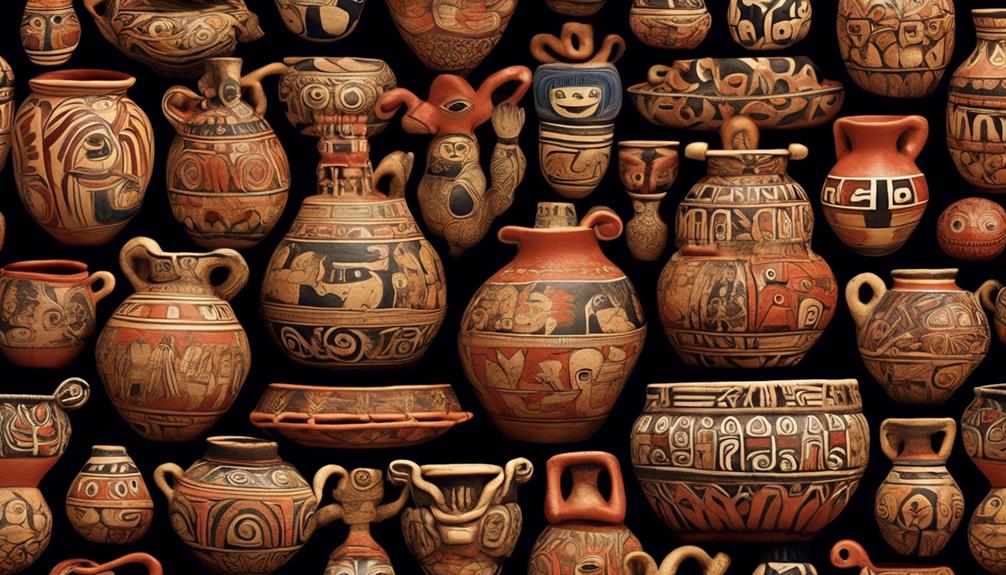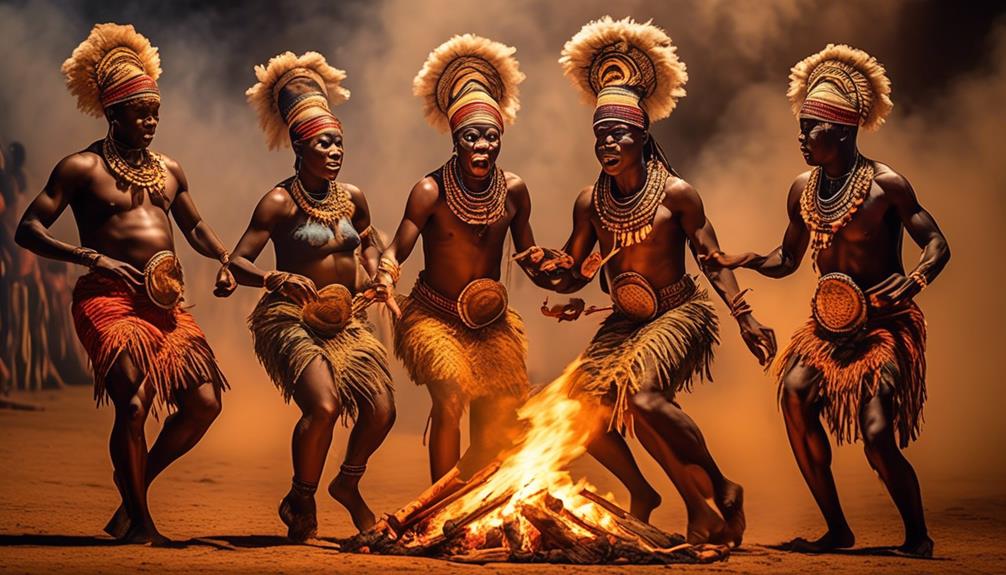It seems that indigenous individuals are great at guiding people to remote locations for several important reasons. Their deep connection to the land and cultural practices provide valuable knowledge for safely traversing and comprehending difficult and secluded environments.
But there's more to it than just that. Keep reading to find out the specific qualities and knowledge that make them such exceptional guides, and why their expertise is so highly valued in the realm of remote travel and exploration.
Key Takeaways
- Indigenous people have deep cultural and environmental knowledge, making them well-equipped to understand and preserve remote areas.
- They possess intergenerational wisdom and traditions, including knowledge of sustainable living and natural remedies, which contribute to their ability to navigate and coexist harmoniously with the environment.
- Indigenous communities have spiritual and sacred connections to the land, viewing it as a living entity with spiritual significance and emphasizing the importance of responsible stewardship for future generations.
- Their adaptability and survival skills, rooted in centuries of accumulated knowledge, enable them to effectively anticipate and navigate environmental changes and overcome challenges.
Cultural and Environmental Knowledge
When exploring remote places, indigenous people serve as invaluable guides due to their deep cultural and environmental knowledge. Their understanding of the land, passed down through generations, is unparalleled. The indigenous communities have a profound connection to the environment, practicing environmental stewardship in a way that's deeply ingrained in their traditions. They possess a wealth of knowledge about local flora and fauna, understanding the delicate balance of the ecosystem and how human actions can impact it. This knowledge is crucial in navigating and preserving these remote areas.
Furthermore, indigenous people are guardians of their culture, and their role as guides allows them to share their traditions and practices, contributing to cultural preservation. They can provide insight into traditional healing practices, storytelling, and rituals, offering a unique and authentic experience for travelers. By participating in guided tours led by indigenous people, visitors not only gain a deeper understanding of the environment but also support the preservation of indigenous culture and heritage.
These experiences foster mutual respect and understanding, creating a sustainable way for indigenous communities to maintain their way of life while engaging with the outside world.
Intergenerational Wisdom and Traditions
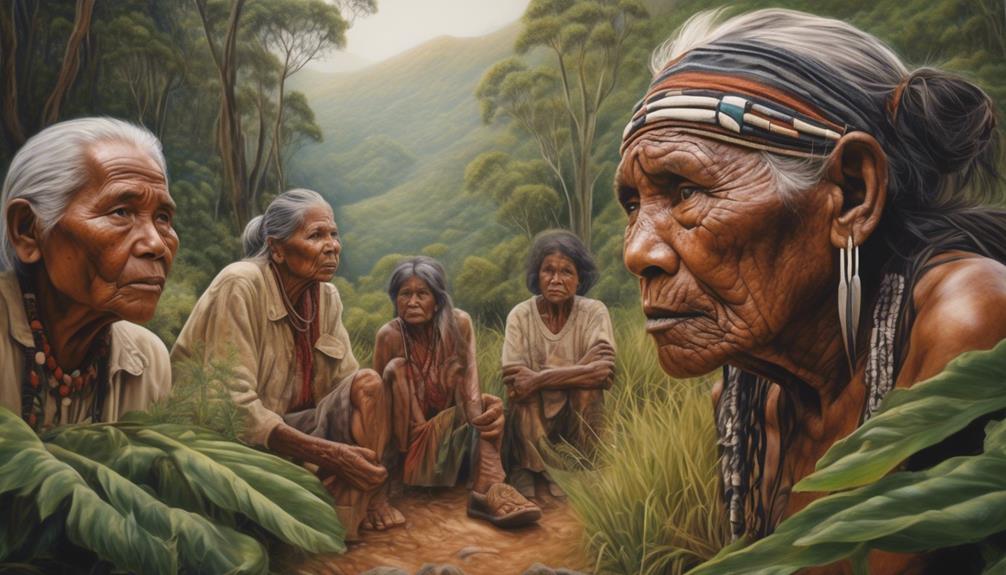
Exploring the depths of intergenerational wisdom and traditions with indigenous communities reveals a rich tapestry of knowledge and practices passed down through generations. The intergenerational wisdom encompasses a profound understanding of the land, its resources, and the delicate balance that sustains life. Traditional practices, deeply rooted in centuries of experience, offer invaluable insights into sustainable living, natural remedies, and the harmonious coexistence with the environment. These traditions are not just historical artifacts but living, breathing systems of knowledge that continue to evolve and adapt to contemporary challenges.
To provide a glimpse into the wealth of intergenerational wisdom and traditional practices, let's delve into a few examples from diverse indigenous cultures:
| Indigenous Community | Intergenerational Wisdom | Traditional Practices |
|---|---|---|
| Maori | Embracing the concept of 'whakapapa' | Preserving and utilizing native plants for healing |
| Inuit | Passing down intricate knowledge of ice and snow | Crafting tools and structures suited for Arctic environments |
| Amazonian | Understanding the medicinal properties of plants | Sustainable farming methods and agroforestry techniques |
These examples merely scratch the surface of the vast reservoir of intergenerational wisdom and traditional practices held by indigenous communities worldwide.
Spiritual and Sacred Connections to the Land
Spiritual and sacred connections to the land intertwine with the essence of indigenous cultures, shaping their worldview and guiding their relationship with the natural world. From an indigenous perspective, the land isn't just a physical space; it's a living entity, infused with spiritual significance and ancestral wisdom. This profound connection fosters a deep sense of responsibility for land stewardship, as indigenous communities view themselves as custodians rather than owners of the land. The sacredness of the land is reflected in rituals, ceremonies, and traditional practices that have been passed down through generations, embodying a holistic approach to environmental conservation.
Indigenous peoples' spiritual and sacred connections to the land offer invaluable insights into sustainable living, resource management, and ecological balance. Their profound understanding of the interconnectedness between humans and nature emphasizes the importance of preserving the land for future generations. This perspective challenges mainstream approaches to environmental conservation by emphasizing the spiritual and cultural dimensions of land stewardship. By recognizing and respecting indigenous perspectives on the spiritual and sacred nature of the land, we can learn from their time-tested wisdom and work towards a more harmonious coexistence with the natural world.
Adaptability and Survival Skills
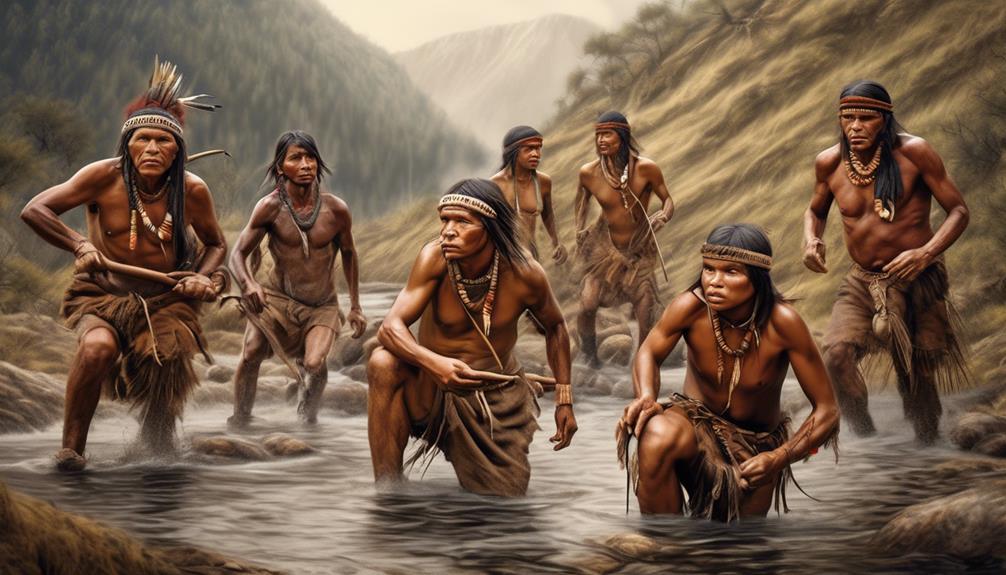
Indigenous peoples possess a wealth of adaptability and survival skills that have been honed over generations, enabling them to thrive in remote and challenging environments. Their adaptability and resourcefulness are evident in the diverse ways they utilize natural resources for sustenance, medicine, and shelter. Additionally, their deep understanding of the land allows them to anticipate and navigate environmental changes effectively. These survival techniques are rooted in centuries of accumulated knowledge, passed down through oral traditions and practical experience, demonstrating a resilience that is unparalleled.
| Adaptability & Resourcefulness | Survival Techniques & Resilience |
|---|---|
| Intimate knowledge of the land, enabling quick adaptation to changes | Mastery of hunting, fishing, and gathering techniques |
| Innovative use of natural resources for food, medicine, and tools | Ability to construct sturdy shelters and navigate harsh terrains |
| Capacity to thrive in diverse ecosystems and climates | Deep resilience in the face of natural disasters and environmental challenges |
The adaptability and survival skills of Indigenous peoples not only showcase their deep connection to the land but also offer valuable lessons in sustainability and resilience for all.
Sustainable and Respectful Practices
Drawing on our deep connection to the land, Indigenous peoples have developed sustainable and respectful practices that harmonize with the environment. Our ancestral wisdom has led to the creation of ethical exploration and sustainable tourism, ensuring that our impact on the land is minimal and respectful.
Here are five key sustainable and respectful practices developed by Indigenous peoples:
- Regenerative Agriculture: Indigenous communities have long practiced regenerative agriculture, which focuses on nurturing the land and ensuring its long-term fertility, rather than depleting its resources.
- Traditional Ecotourism: Indigenous peoples have pioneered traditional ecotourism initiatives that offer visitors the opportunity to immerse themselves in Indigenous cultures and learn from their sustainable way of life.
- Respect for Wildlife: Indigenous communities have a deep respect for wildlife and have developed practices that allow for coexistence and minimal disruption to natural habitats.
- Cultural Preservation: Indigenous peoples prioritize the preservation of their cultural heritage, ensuring that tourism and exploration activities respect and contribute to the preservation of traditional practices and knowledge.
- Low-Impact Travel: Indigenous guides promote low-impact travel practices that minimize environmental disruption and respect the delicate balance of ecosystems.
Frequently Asked Questions
What Are Some Specific Examples of Indigenous Practices for Sustainable and Respectful Use of Natural Resources?
When it comes to indigenous practices, sustainable utilization and respectful stewardship of natural resources are central.
For example, indigenous communities often have traditional knowledge and techniques for managing and conserving resources like water, forests, and wildlife.
These practices are deeply rooted in a profound understanding of the interconnectedness of ecosystems and the need for long-term sustainability.
Indigenous peoples' reverence for the land informs their careful and respectful use of natural resources.
How Have Indigenous Communities Adapted to Modern Challenges and Changes in Their Environments?
Indigenous communities have developed remarkable adaptation strategies to address modern challenges and environmental changes. Their traditional knowledge and survival skills have enabled them to navigate and thrive in diverse landscapes. By preserving and passing down their ancestral wisdom, they've cultivated a deep understanding of their surroundings.
This has allowed them to adapt to shifting conditions, ensuring their continued resilience in the face of evolving environmental dynamics.
Can You Provide Examples of Specific Spiritual and Sacred Connections to the Land That Indigenous People Hold?
Indigenous spirituality and sacred connections to the land are deeply rooted in our culture. Our land practices reflect our environmental adaptation, survival skills, and intergenerational wisdom.
For example, our spiritual ceremonies often involve specific rituals tied to the land, demonstrating our profound connection to it. These practices have been passed down through generations, shaping our understanding of the natural world and serving as a guide in remote places.
What Are Some Intergenerational Wisdom and Traditions That Have Been Passed Down Within Indigenous Communities?
Intergenerational wisdom and cultural traditions are deeply embedded within indigenous communities. These include spiritual connections to the land, indigenous practices, survival skills, and adaptability.
Passed down through generations, these traditions instill resilience and a profound understanding of the environment. They offer valuable insights into navigating remote places, making indigenous people exceptional guides.
Their knowledge is a testament to the enduring legacy of their ancestors, enriching their ability to thrive in diverse landscapes.
How Do Indigenous People Navigate and Survive in Remote and Harsh Environments, and What Specific Skills Do They Possess for Adaptability and Survival?
Indigenous navigation, survival skills, traditional knowledge, and environmental resilience are key to their success. These communities possess a deep understanding of their surroundings, honed through generations of lived experience. Their adaptability and resourcefulness enable them to thrive in remote and harsh environments.
From tracking animal behavior to identifying edible plants, their skills are unparalleled. These abilities make them invaluable guides, offering a wealth of knowledge to those venturing into these challenging landscapes.
Conclusion
In conclusion, indigenous people are excellent guides to remote places due to their deep cultural and environmental knowledge, intergenerational wisdom, spiritual connections to the land, adaptability, and sustainable practices.
I once followed an indigenous guide through a dense jungle, amazed at how effortlessly he navigated the terrain, and realized that his connection to the land was like a compass guiding us to our destination.
Their guidance is invaluable for anyone venturing into remote areas.
Mary is a passionate writer who brings creativity and a fresh perspective to our team. Her words have the power to captivate and inspire, making her an essential contributor to our content. Mary’s commitment to storytelling and dedication to promoting Indigenous culture ensures that her work touches the hearts of our readers. We’re fortunate to have her as part of our team.
